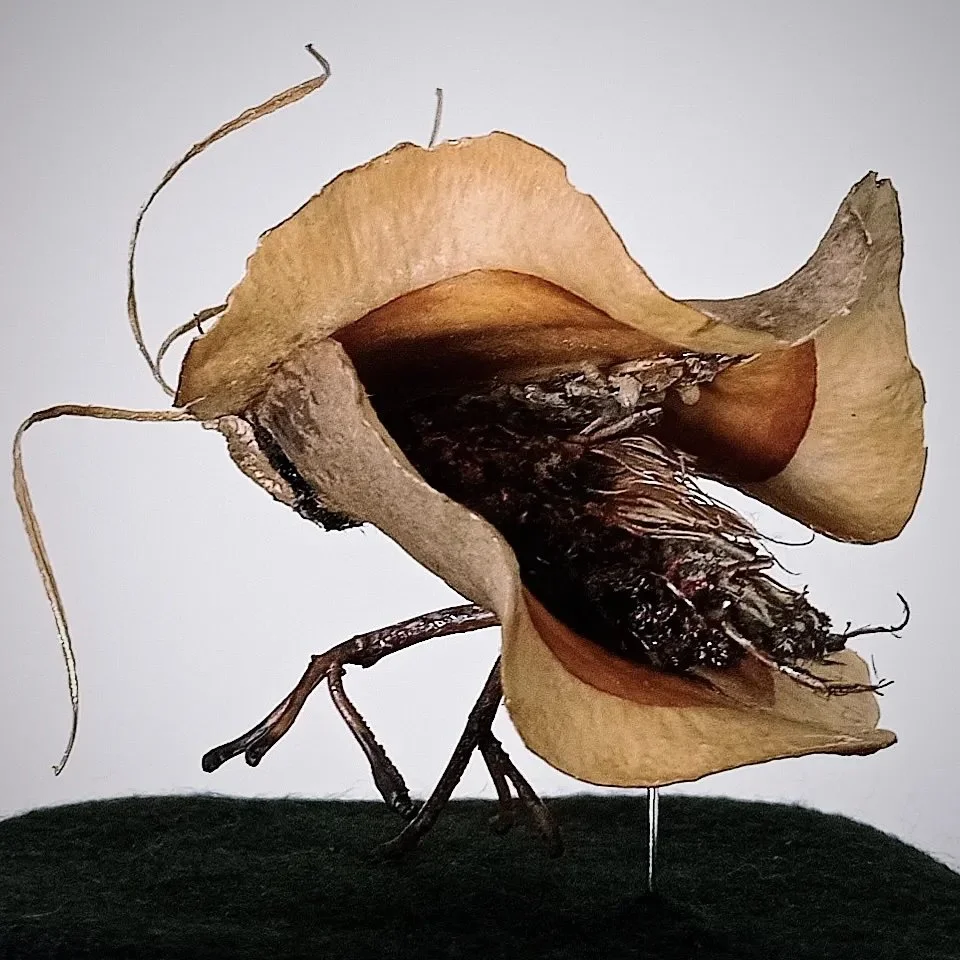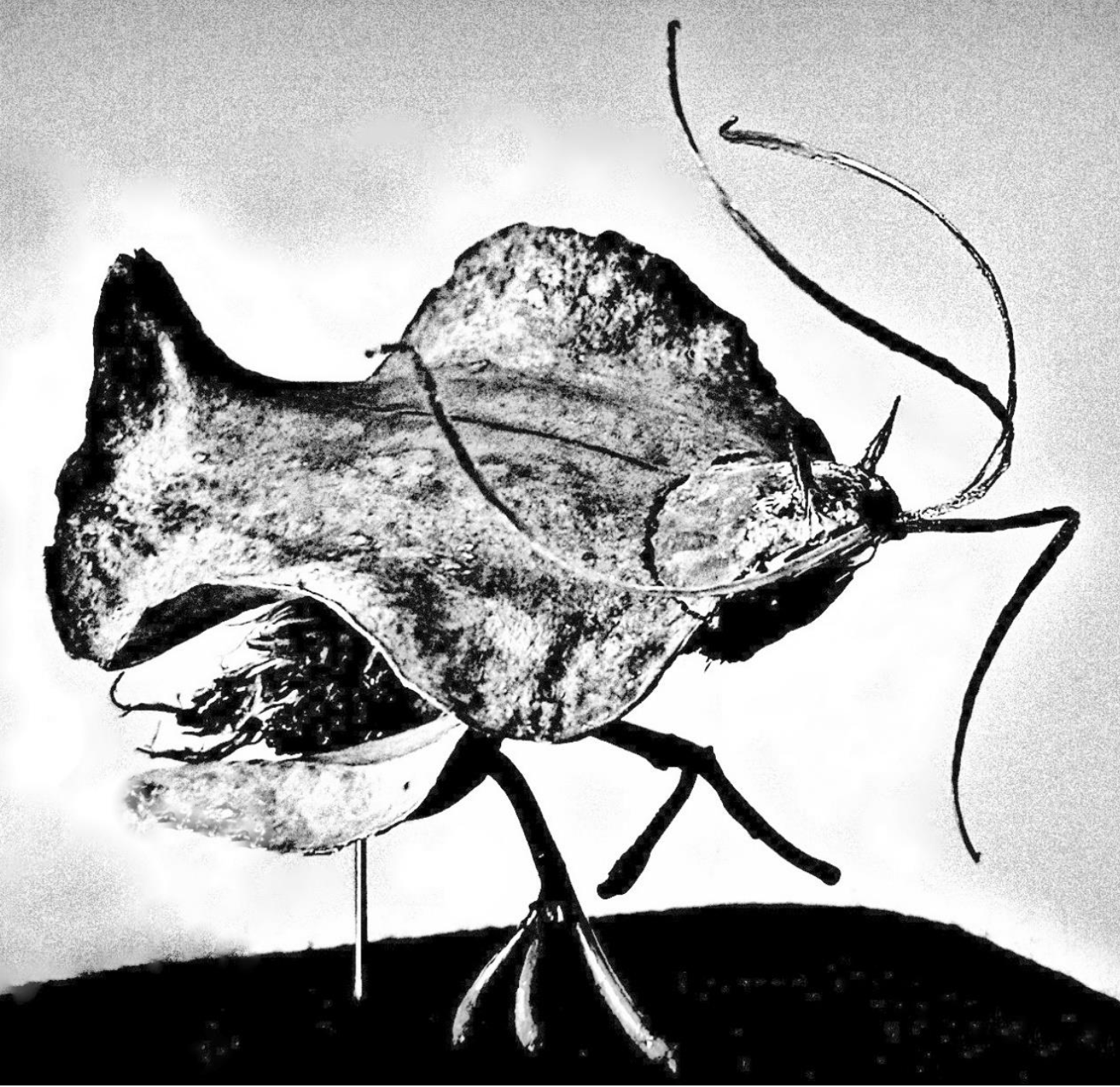Common Name: Cyclone Clam
Scientific Name: Omophraneta hermetica
Specimen Length: 76mm
Specimen Sex: Male
First Described: AD 2032
Description and Habitat: Although commonly called a Cylcone Clam, this very interesting animal is not a bivalve, or related to molluscs in any way. It is, in fact, an insect, a direct descendant of Periplaneta americana, or the common brown cockroach. Native to Africa and the Middle East, P. americana is thought to have been introduced to Omophron, a genus of American ground beetle, during the 17th century, on colonists’ ships that were passing through Africa for commercial activities, including the Atlantic slave trade. Isolated in an enclosed environment for long periods of time, and over many generations, the beginnings of hybrid speciation took place, the first step on a short process of evolution resulting in Omophraneta hermetica.
Sparsely distributed throughout the world, it is most prevalent across the tropics, particularly in areas with high storm frequency rates, its ability to seal completely water tight enabling O. hermetica to successfully withstand the vicious hurricanes frequently ripping through its territory. First described in AD 2032, it was discovered in the ruins of Manila, the ancient capital city of the land mass formerly known as the Philippines, that was destroyed in AD 2030 by Hurricane Hades. Initially thought to be a closed common clam species (Ruditapes philippinarum), closer study revealed an exoskeleton so well evolved, it displayed closure mechanisms that are almost instant, and a rapid but very fine overgrowth capability, sealing tight any and all vulnerable areas: legs lie flat into cavity recesses on its ventral side, mouth parts retract into its head, and a gelatinous adhesive exudes all along the exterior edge of its elytra, the hard wing casings that clamp down flush with the outer shell of the abdomen. Its four highly informative antennae curl up tight into their scape, or antennae bed, although depending on the severity of the storm, these are often lost. In that case, the Omophraneta hermetica will go into a period of dormancy, self-induce hibernation until its antennae have grown back, indicating environmental conditions have calmed enough to emerge. This can take anywhere up to four weeks, and is an interesting evolutionary tactic allowing this hardy insect to survive in such hostile conditions.
Reproduction: After finding a suitable carcass, male Cyclone Clams release pheromones to attract a female and then wait. As this process is very weather dependant, their breeding season is short, during the relatively dry few weeks of summer, and it is imperative a mate is found within a few days, otherwise the offspring risk being drowned. Once a female has chosen a partner, mating will take place by the male inserting his aedeagus into the female's genital opening to transfer sperm which is stored in the female's reproductive tract and used to fertilize eggs. The female then lays as many as 600 eggs into a chamber next to the carcass, from where the larvae will hatch and go through three instar stages before pupating as adults.
Life span: Up to four years.




